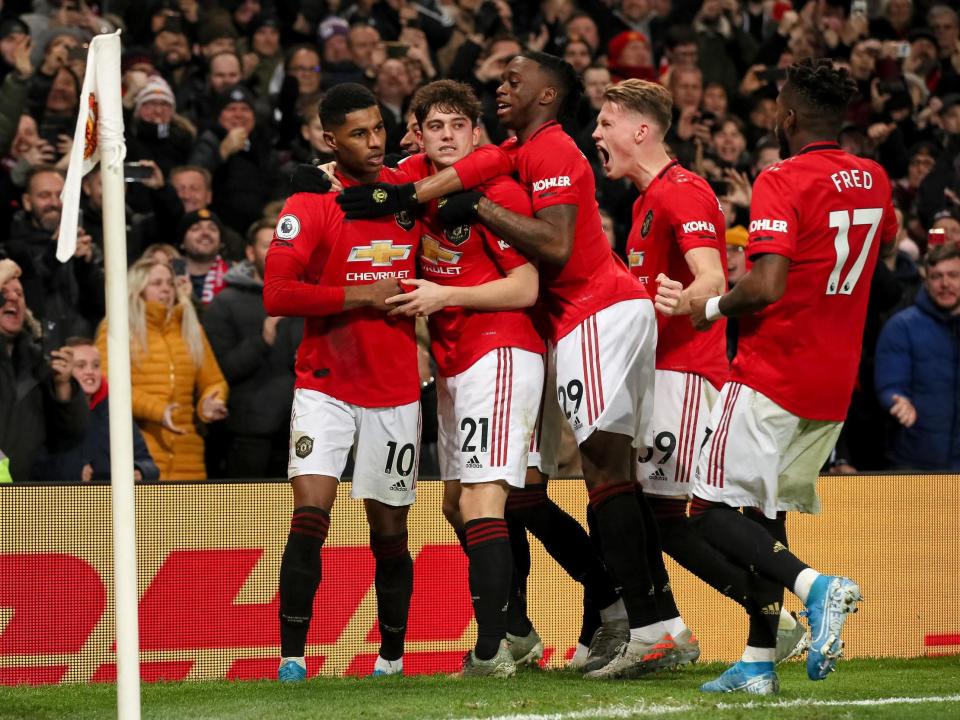How do mediocre Manchester United have such a good record versus top sides?

Jose Mourinho was uncharacteristically gracious in defeat on Wednesday night, admitting that Tottenham deserved to come away from Old Trafford with nothing, but he was also frank in his assessment of Manchester United. “They are not afraid to be with a defensive approach,” he said. “They are not afraid to be at home, to take their time, to be in control of the emotions of the game.
“When they are winning matches they are comfortable in this situation of low block with a giant dominating in the air and being fast in counter-attack with Marcus, with James, with Jesse, with Martial when he plays. I think the way they play is easier for them when they play against teams that are better teams, teams that want more of the ball, to have initiative of the game, so I think they did well.”
Was that a backhanded compliment? Or was it the best attempt yet to explain how a team as mediocre as United has such a good record against elite opposition? In 14 meetings with the other members of what we can now call the ‘top seven’ – Tottenham, Liverpool, Manchester City, Arsenal, Chelsea and Leicester City – Ole Gunnar Solskjaer has now won eight, drawn four and lost only twice.
Clearly, United are a strange side. They averaged 43% possession in those 14 ‘top seven’ games, spanning both league and cup competitions, with more than 50% in only four of them. But if they were all league fixtures, United would have taken 28 points from a possible 42 – more than you would expect for a team that was generally second-best on the balance of play.
But with every passing week of Solskjaer’s reign, there is more and more evidence to suggest that United prefer playing teams that want the ball. This past month, they have lost to Astana and drawn with newly-promoted Sheffield United and Aston Villa after dominating with around 60% possession. Yet on Wednesday they beat Tottenham with only 47%, while the win over Brighton came with just 43%.
Since Solskjaer’s appointment as caretaker manager around this time last year, United have only failed to win seven of the 21 games in which they have seen less of the ball than their opponents. By contrast, they have won just 12 of the 31 in which they have had the majority of possession, and four of those victories came way back last Christmas in Solskjaer’s first four games in charge.
It is a pattern that was first documented in these pages after the home defeat to Crystal Palace in August and, several months later, it is still critical to understanding United’s mysterious inconsistency. If you are thinking that somebody should really ask Solskjaer why this seems to be the case, don’t worry, somebody did. Only Solskjaer did not give the most illuminating of answers.
“There are many different reasons for how a game goes,” he said. Solskjaer then paused contemplatively, eventually adding: “We’ve had players enjoying themselves tonight, players taking people on.” He went on to admit that United have not always been efficient at breaking less ambitious teams down, but offered no more illumination on why the opposite is true against the very best. Is it really just a case of players “enjoying themselves” and “taking people on”?
Maybe it should not surprise us that a manager who is guarded about routine injury news does not wish to divulge his tactical master plan. But the vision which Solskjaer sold to Ed Woodward and others before being permanently appointed was one of quick and direct counter-attacking, playing “one pass through the middle” rather than what he has previously called “pointless” sideways passing.

That approach all well and good, and it can be particularly effective when opponents offer United space in which to play, but it is a limited and somewhat unsophisticated approach. It is not enough when United themselves are presented with a low block to break down and – by dent of their reputation, history and stature within English football and the wider game – they are often the ones expected to take the initiative.
So what of this weekend’s 179th Manchester derby, when United visit the only team in the top flight who have averaged more than 60% possession this season? If Tuesday’s win at Turf Moor is anything to go by, City are back to their brilliant best. And though Solskjaer has only come up against the Premier League champions once over the past year, that meeting is one of the two ‘top-seven’ defeats he has suffered.
At Old Trafford back in April, a patient, methodical City took until the second half to break United’s resistance down but once they did, they scored twice in 12 minutes to win and take another step towards retaining their title. It is one of only four times that Solskjaer’s United have seen less of the ball than their opponents and lost. It is the only time that has happened against English opposition.
For top sides, playing United now poses a question which is difficult to answer: how do you beat a team that does not want the ball? Ironically, it is a question which Mourinho has often sought to pose himself. But it is also a problem that Guardiola has regularly had to solve throughout his career, usually against less illustrious opposition than United. For that reason, do not be surprised if Solskjaer’s surprisingly impressive record against top sides takes a hit on Saturday.